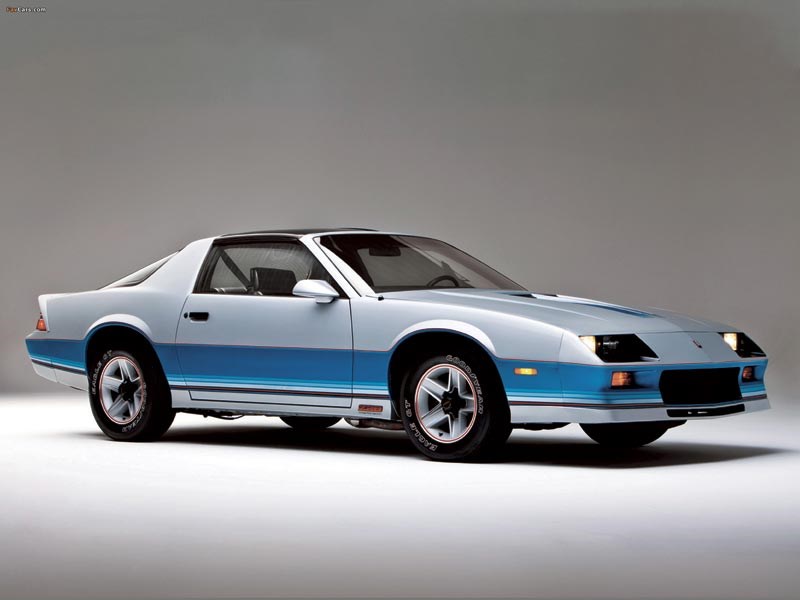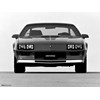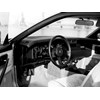1982-92 Chevrolet Camaro: Buyers Guide
 1982-92 Chevrolet Camaro
1982-92 Chevrolet Camaro

 1982-92 Chevrolet Camaro
1982-92 Chevrolet Camaro

 1982-92 Chevrolet Camaro
1982-92 Chevrolet Camaro


|
|
1982-92 Chevrolet Camaro
|

|
|
1982-92 Chevrolet Camaro
|

|
|
1982-92 Chevrolet Camaro
|
Snapshot: Third-gen Camaros offer plenty of performance for the bargain hunter...
1982-92 Chevrolet Camaro
WHAT IS IT?
By the time Chevrolet released the third development of its Mustang pony car rival in 1982, the heady days of high-performance, big-block V8 muscle were well and truly over.
Tighter government emissions regs, a rapid rise in oil prices, and tough economic times at General Motors had all helped put the squeeze on grunt, to the point where the Camaro was available with Pontiac’s pint-sized, 68kW 2.5-litre four-pot. It was joined by Chevrolet’s 2.8-litre V6, and two 5.0-litre V8s.
For 1982, the headline power unit was an electronic fuel-injected 5.0-litre V8 pumping out a relatively wheezy 123kW. To make matters worse, the range-topping Z28 with throttle-body V8 only came with a three-speed auto; if you wanted a four-speed manual you had to settle for the same V8 with a four-barrel carby, generating some 15kW less.
For the first time, the Camaro/Firebird ‘F-body’ was of a unitary construction. This led to a significant weight loss, although kerb weight was still a hefty 1452kg, and there was little interior space in relation to the large 2+2 hatchback body. Helped by a severe sloping windscreen, aerodynamics were reduced to 0.368Cd.
Bucking conventional wisdom, Chevy engineers designed the range-topping Z28 first, working back to the lesser Berlinetta and Sports Coupe editions. Developing outstanding handling over ride comfort was the main priority, and this is where US critics raved about the Z28, one going so far as to say that it "was the best handling car made in this country".
There was nothing radical about the suspension set-up — live rear axle, trailing arms, and anti-roll bars front and rear — but the hard-riding Z28 was uprated for stiffness and quickness of steering for even better cornering ability.
In 1983, a new ‘high output’ 5.0-litre V8 was released, with different cam, Rochester four-barrel and 142kW; a significant increase over the old throttle-body unit which was deleted in 1984.
The IROC-Z, a fiery Z28 option added to the range in 1985, could be specified with a new Tuned Port fuel-injected V8, offering better fuel efficiency and 160kW. In 1987, a more powerful 5.7-litre V8 with 168kW became available.
Other IROC-Z highlights were 8x16-inch alloy wheels with 245/50 tyres, re-tuned chassis and suspension, and unique exterior graphics. A five-speed manual and 7.0sec 0-100km/h acceleration were other potential enticements.
In 1987, the four-cylinder engine was quietly dropped and a convertible was reintroduced to the range.
With well over one million sold from 1982-’87, third-gen versions continued the Camaro sales success story for GM.
HOW'S IT DRIVE?
Although the body shrunk slightly, interior room of the third-gen Camaro stayed the same. This means good leg and headroom up front, but room for little more than a few bags on the rear seats. Some cars were fitted with the Contour seat with six separate adjustments, and these offer better lateral support and comfort than the standard reclining front seats.
Inside, the overall mood is dark and sombre, the black dash designed to reduce glare from sun rays filtering through the big glasshouse. The dashboard design is restrained, with easy to read instruments and no glove box — it’s alternatively located in the console.
Fire-up the 1983 Z28’s 5.0-litre V8, and its quiet rumble turns to a muted roar as you plant the foot and take the revs to the 5000rpm redline. Zero to 100km/h takes around 8sec, not quick in sports car terms, but fast enough to not get left too far behind at the lights.
The Camaro’s strength is its impressive cornering ability and traction, assisted by a stiff chassis and grippy 215/65R15 tyres. The downside is a firm ride, not helped by a live axle that transmits most road bumps into the cabin.
Steering response is good, aided by power-assist, and the front discs/rear drums pull the big coupe up with limited fuss.
CHECKLIST
Being zinc-dipped, Camaros of this vintage shouldn’t suffer from corrosion nearly as badly as earlier models. Although they improved, these Camaros are notorious for shabby build quality and cheap fittings — don’t be too alarmed at large ‘factory fitted’ gaps in body panels.
A few V6s were imported here, but V8 engines are the most commonly encountered powerplant. The small-block Chev engine has a reputation for durability and reliability, if looked after and maintained properly. Some throttle-body V8s suffered from sluggish throttle response, while carby V8s suffered fuel starvation under hard acceleration and when hot. Super T-10 or Saginar four-speeds are more durable than the autos. The 1983-on Turbo Hydramatic 700-R4 is superior to the Turbo Hydramatic 200 (’83-’84). Oil pumps can suffer on high-mileage autos, and the cast housing within the unit can break, resulting in a costly repair. Early models also suffered from differential noise which was rectified on later models. Positraction differentials should have their fluid changed, including new additive, every 15,000 miles. Suspension and brake systems are durable enough for regular road use.
Options included power windows, cruise control, keyless entry and six-way power seats. Slow-winding power windows may need lubrication or replacement. Expect general interior rattles and loose plastics and trim. The dash lasts well but the large centreal vent can crack. For T-tops the lining around the panels breaks down quickly once damaged, though seal kits are available, as are used T-top glass panels.
SPECIFICATIONS
1982-92 Chevrolet Camaro
Body: 2+2 hatchback coupe; T-top; convertible
Engines: 2472cc four-cylinder, OHV; 2835cc V6; 4999cc V8, OHV; 5737cc V8, OHV (1986)
Power: 67kW (2.5L); 168kW (5.7L)
Gearbox: 4- or 5-speed manual (1986-87); 3- or 4-speed auto.
Suspension: MacPherson strut with coil springs (f); Torque arms with struts and coil springs (r)
Brakes: power disc (f); drum (r) (rear disc optional)
2014 Price: $4500 - $18000
*****
More reviews:
> Feature: 1980s 10-car buyer's guide
> Touring car masters Chevrolet Camaro
> Driven: 2009 Chevrolet Camaro SS
Search used:
>> Search Chevrolet cars for sale
Unique Cars magazine Value Guides
Sell your car for free right here
Get your monthly fix of news, reviews and stories on the greatest cars and minds in the automotive world.
Subscribe

.jpg)









.jpg)

